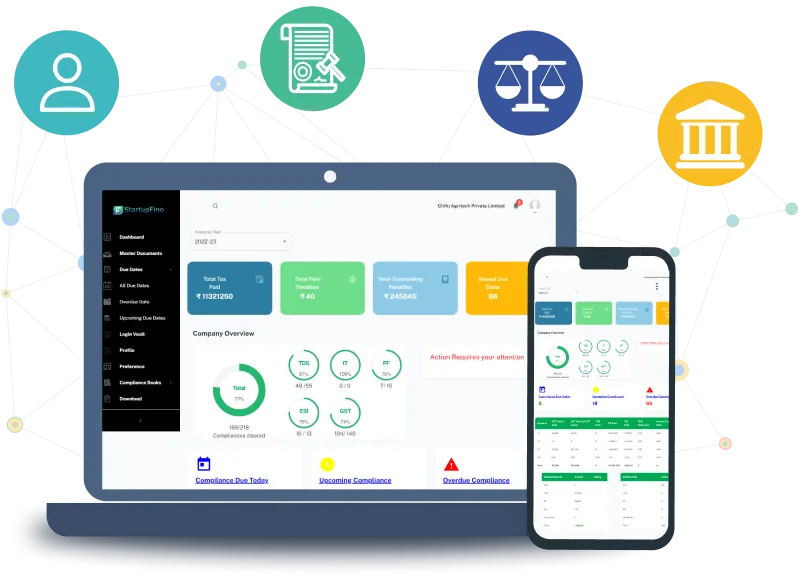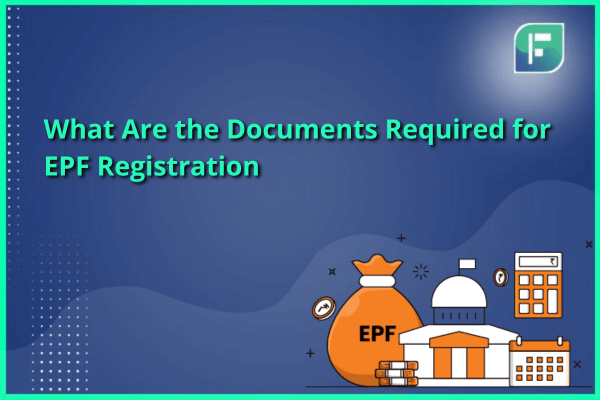The Contract Labour (Regulation and Abolition) Act of 1970, commonly referred to as CLRA, was established in India with the main goal of overseeing and managing the employment of contract labour. Its purpose is to improve working conditions and prevent the exploitation of contract labourers. In this context, it is essential to understand the key provisions and applicability criteria of the Act as well as basic services required for CLRA Registration and Licencing in India.
Applicability of the Contract Labour (Regulation and Abolition) Act 1970
For CLRA Registration and Licencing, the CLRA Act applies to specific categories of establishments and contractors, including:
1. Establishments Covered by the Act
The law applies to businesses that hire twenty or more workers as contract labour at any point during the financial year.
2. Contractors Falling Under the Act
Along with these establishments stated above, contractors who hire twenty or more workers at any time during the financial year must follow the CLRA Act's regulations.
Exemptions from the CLRA 1970
For CLRA Registration and Licencing, while the CLRA Act covers a wide range of establishments and contractors, certain exemptions exist. The Act exempts the following from its jurisdiction:
1. Intermittent Nature of Work
Establishments engaged in work of an intermittent nature, where employment is not continuous, are exempt from the Act's provisions.
2. Inactivity for Over 21 Days
Establishments that have not engaged in any work for more than 21 days within a year are not subject to the Act's regulations.
3. Special Economic Zones
Establishments located within Special Economic Zones are exempt from the CLRA Act.
4. Seasonal Work Less Than 60 Days
Establishments involved in work of seasonal nature for less than sixty days in a year are not bound by the Act's requirements.
Types of CLRA Registration and Licencing
Under the Contract Labour (Regulation and Abolition) Act 1970, various types of CLRA Registration and Licencing are essential for compliance. These different types of CLRA Registration and Licencing serve different purposes and are categorised as follows:
1. Registration of Principal Employer of the Establishment
This type of registration is required for the principal employer of an establishment. The principal employer is the entity responsible for engaging contract labourers. Registering the principal employer is a key step in ensuring compliance with the Act.
2. Licencing of Contractors (Valid for 12 months)
Contractors who employ contract labourers must obtain a contractor licence, which is valid for a period of 12 months.
4. Renewal of Contractor Licence
To maintain compliance, contractors must renew their licences before they expire. An application for licence renewal should be made in Form VII and this application must be submitted not less than 30 days before the current licence's expiry date.
5.Temporary Certificate of Registration and Licence
In certain situations where the employment of contract labour is short-term, a temporary certificate of CLRA Registration and Licencing may be issued. This is applicable when the engagement of contract labourers is for a duration not exceeding 15 days.
To obtain a temporary certificate of registration, an application must be submitted in Form VIII. Similarly, for a temporary licence, the application should be made using Form X. These applications typically require an accompanying affidavit.
Compliance Requirements for CLRA Registration and Licencing
Compliance with the Contract Labour (Regulation and Abolition) Act 1970 involves various obligations, including the maintenance of records, registers and submission of specific returns. The key compliance requirements for CLRA Registration and Licencing are as follows:
1. Notice of Commencement/Completion of Contract Work (Form VI-B)
The principal employer or contractor is required to submit a notice in Form VI-B to inform the appropriate authority about the commencement or completion of contract work. This notice helps in tracking the engagement of contract labour at a particular establishment or industry with CLRA Registration and Licencing.
2. Maintenance of Registers and Records
Compliance under the CLRA Act necessitates the maintenance of several registers and records, which include:
- Register of Contractor (Form XII): A record of contractors engaged in contract work at the establishment.
- Register of Persons Employed (Form XIII): This register contains details of all individuals employed as contract labour, including their personal information and employment terms.
- Employment Card (Form XIV): Every worker employed as contract labour should receive an employment card within three days of their employment, which is maintained as part of the compliance records.
- Service Certificate on Termination (Form XV): When a worker's contract is terminated, a service certificate in Form XV should be provided to them, outlining their service details.
- Muster Roll (Form XVI): This record maintains attendance and details of daily wages of contract labourers.
- Register of Wages (Form XVII): The register of wages records the wages paid to contract labourers and related information.
3. Submission of Returns
To meet CLRA compliance, specific returns must be submitted:
- Half-Yearly Return (Form XXIV) by the Contractor: Contractors are required to file a half-yearly return in Form XXIV, which provides an overview of contract labour engagement during the specified period.
- Annual Return Filed by Principal Employer: The main employer must submit a yearly report using Form XXV. This report outlines the engagement of contract labour throughout the year.
Definitions Under the Contract Labour (Regulation and Abolition) Act 1970
In the context of the Contract Labour (Regulation and Abolition) Act 1970, certain key definitions are essential for a clear understanding of the legal framework and its application. These definitions include:
1. Contract Labour:
A contract labourer is an individual engaged and employed to work within or in connection with the operations of an establishment and this employment is facilitated through or by a contractor. This engagement can occur either with or without the knowledge of the principal employer.
2. Contractor:
In the context of an establishment, a contractor is a person who provides goods or manufactured articles to the establishment using contract labour or supplies contract labour for various tasks within the establishment. The contractor also commits to delivering a specified outcome or result for the establishment. This definition of a contractor includes the inclusion of sub-contractors, recognising the hierarchical nature of certain employment arrangements.
3. Establishment:
An establishment can be an office linked with the Indian Government, a local authority or any location where different industrial, manufacturing, trade or business activities happen. This wide definition includes various work settings and entities, all of which must follow the regulations of the CLRA 1970.
Principal Employer and Workman Definitions Under CLRA Act
The Contract Labour (Regulation and Abolition) Act provides specific definitions for the terms "Principal Employer" and "Workman." These definitions are essential in determining the roles and responsibilities of various individuals within the scope of the Act.
Principal Employer
Principal employer definition under CLRA Registration and Licencing includes:
In an office or department: The Principal Employer is defined as the head of the office or department or any other officer designated by the Government or local authority. The Principal Employer is responsible for compliance with the Act within the context of the office or department.
In a factory: The Principal Employer is the occupier or owner of the factory or the manager as designated under the Factories Act. The Principal Employer within a factory setting is accountable for ensuring Act compliance.
In a mine: The Principal Employer is the agent or owner of the mine or any person designated as the manager. This individual is responsible for ensuring compliance with the Act's provisions within a mining operation.
In other Establishments: The Principal Employer is any person who holds responsibility for the supervision and control of the establishment. This designation ensures that someone is accountable for Act compliance within the specific establishment.
Workman
A "Workman" within the context of the CLRA Registration and Licencing refers to any individual employed within an establishment or in connection with it to perform tasks that may be skilled, semi-skilled or unskilled, including manual, technical, supervisory or clerical work, under an express or implied employment agreement.
The definition of a Workman excludes the following:
- Individuals employed in managerial or administrative roles.
- Individuals employed in supervisory roles but earning a monthly income exceeding Rs. 500 or primarily performing managerial tasks.
- Out workers, defined as individuals to whom materials or articles are provided by or on behalf of the Principal Employer for various processing or finishing tasks. These tasks are typically done outside the direct control and management of the Principal Employer, either in the out worker's home or in another location.
Registration of Establishment under the Contract Labour Act
The process of registering an establishment under the Contract Labour (Regulation and Abolition) Act, 1970 involves specific steps and procedure as has been given below:
1. Application by the Principal Employer:
The principal employer of an establishment initiates the registration process. The principal employer is the entity responsible for hiring and overseeing contract labourers within the establishment.
2. Role of Registering Officer:
A registering officer, appointed by the appropriate Government as prescribed by the Act, is responsible for handling the registration process. This officer plays a vital role in evaluating the application for registration and ensuring compliance with the Act's provisions.
3. Application Timing:
The application for registration must be submitted within the timeframe specified by the appropriate Government. The Act provides guidelines for the application period.
The registering officer has the authority to consider an application even after the specified period if they are convinced that a legitimate reason prevented the applicant from submitting the application within the given timeframe.
4. Verification and Approval:
When an application is submitted, the registering officer carefully reviews it and only if he finds that everything is in order, he then proceeds with the registration process.
5. Revocation of Registration:
If the registering officer finds that an establishment obtained its registration through misrepresentation or by hiding important facts or if the registration becomes ineffective for any reason, the officer can start the process of revoking the registration.
Revoking the registration requires approval from the appropriate Government beforehand. The principal employer has the chance to present their case and voice their perspective in this matter.
Licencing of Contractors Under the Contract Labour Act
The licencing of contractors under the CLRA, 1970 is an important aspect of ensuring the regulation and compliance of contract labour employment. Given below is the process of licencing and the associated conditions:
1. Licence Requirement:
Contractors are legally obligated not to undertake or execute any work involving contract labour without obtaining valid CLRA registration and licencing. This licence is issued by the licencing officer, who is appointed by the appropriate Government as specified by the Contract Labour Regulation Act.
2. Licence Conditions:
The licence granted to a contractor is subject to specific conditions including:
- Conditions related to the hours of work for contract labour.
- Fixation of wages for contract labour in accordance with applicable regulations.
- Provision of essential amenities and facilities for the welfare of contract labourers.
3. Application for Licence:
The contractor must submit an application that provides the following particulars:
- The location of the establishment where contract labour will be employed.
- A description of the nature of the process, operation or work for which contract labour is intended to be employed.
- If there are other particulars prescribed by the relevant authorities.
4. Revocation, Suspension or Forfeiture:
If the licencing officer believes that a licence was brought through misrepresentation or by hiding important facts or if the licence holder fails to comply with the conditions mentioned in the licence or even in the chance that he breaks any rules of the Act without a valid reason, the licencing officer has the authority to take corrective actions. These actions might involve:
- Revoking or suspending the licence.
- Confiscating all or a part of the security deposit held by the licence holder.
Before taking these measures, it is important that the licencing officer grants the licence holder a chance to explain their situation and offer a reasonable explanation.
Documents Required for Registration of Principal Employer and Licencing of Contractors
The Contract Labour (Regulation and Abolition) Act mandates specific documentation for the registration of Principal Employers and the licencing of Contractors. Given below is a list of the essential documents required for each process:
1. Valid Trade Licence: A copy of the trade licence indicating that the establishment is legally permitted to conduct its business activities.
2. Articles of Association and Memorandum of Association or Partnership Deed: These legal documents, depending on the type of entity, provide details about the establishment's structure, ownership and governance.
3. Factory Licence: If applicable to the establishment, a valid factory licence that allows specific manufacturing or production activities.
4. Additional Certificates of Registration: If the establishment represents a different entity type, apart from being a company, proprietorship or partnership firm, relevant certificates of registration specific to that entity must be furnished.
5. Supplementary Documents as Required: The registering authority might have specific demands necessitating additional documents to finalise the registration procedure.
Documents Required for Licencing of Contractors
The documents needed for registration of contractors include the following:
1. Form V: The application form for the grant of a contractor's licence, typically provided by the relevant authorities.
2. Valid Work Order: A copy of the work order that specifies the nature of the work for which contract labour is employed. This work order is an important document in demonstrating the need for a contractor's licence.
3. Trade Licence: A valid trade licence is often a standard requirement for licencing contractors, ensuring they are authorised to operate their business.
4. Supplementary Documents as Necessary: As per the specific rules and directives in the relevant jurisdiction, additional documents might be required for the contractor's licence application.
Procedure for Registration of Principal Employers under the Contract Labour Act
The registration process for Principal Employers under the Contract Labour (Regulation and Abolition) Act involves several steps, as given below:
1. Registration with Unified Shram Suvidha:
The applicant begins by registering on the Unified Shram Suvidha platform. This registration requires the provision of basic details such as name, email, mobile number and other necessary information.
2. Filing the Application:
After successful registration, the applicant proceeds to file the application using the appropriate Form, ensuring that all required details and information are provided accurately.
3. Details Required in the Application Form:
The application form should include various categories of details relating to the Principal Employer and the establishment. These details include:
Principal Employer Details:
- Name of the Principal Employer
- Address
- Designation
- Gender
- Email
- Mobile Number
- Father/husband name of the Principal Employer
- Establishment Name
- Contract Type
- Maximum number of contract labour employed on any day
Registration Fee: The registration fee varies based on the number of workers, as follows:
- Up to 20 workers: Rs. 60
- Exceeds 20 but does not exceed 50 workers: Rs. 150
- Exceeds 50 but does not exceed 100 workers: Rs. 300
- Exceeds 100 but does not exceed 200 workers: Rs. 600
- Exceeds 200 but does not exceed 400 workers: Rs. 1200
- Exceeds 400 workers: Rs. 1500
Establishment Details:
- Name of Establishment
- Location of Establishment
- Ownership type/sector
- Activity as per National Industrial Classification
- Details of selected NIC Code
- Nature of work carried on in Establishment
- Identifiers of Establishment
Manager Details:
- Name of the manager or any person responsible for supervision and control of the Establishment
- Address of the Manager
- Email Address
- Mobile Number
- Contract Type
Contractor Details:
- Name of Contractor
- Maximum number of contract labour employed through this contractor on any day
- Address of the contractor
- Email Address
- Mobile Number
- Identifier of Contractor
- Contract Type
Contract Work Details:
- Location of contract work
- Contractor
- Estimated date of commencement of contract work
- Activity as per National Industrial Classification
- Estimated date of completion of contract work
- Details of selected NIC Code
- Nature of the work for which contract labour is employed
- Contract work details
4. Payment and Submission:
After completing all the necessary details in the application form, the applicant is required to make the payment and then submit the application.
5. Application Approval:
The relevant authority reviews the application and, if satisfied, approves it.
6. Issuance of CLRA Registration and Licencing Certificate:
Upon approval, the authority issues the CLRA Registration and Licencing Certificate to the Principal Employer.
Procedure for Registration of Contractors under CLRA
The process for obtaining a CLRA licence for contractors involves several steps, ensuring that contractors adhere to the legal requirements for employing contract labour. Given below is an detailed procedure:
1. Application Submission:
The applicant initiates the process by submitting an application on the Shram Suvidha platform provided by the Ministry of Labour & Employment.
2. Application Form Details:
The application form requires the provision of specific details, categorised as follows:
Contractor Details:
- Name of Contractor
- Name and Designation of Representative
- Address of Contractor
- PAN (Permanent Account Number) of the contractor
- PAN Card details
- Address of Representative
- Mobile number of Representative
- Contract type
Establishment Details/Principal Employer Details:
- Registration Certificate number of the Establishment
- Name of Establishment
- Name and Designation of Principal Employer
- Date of Registration
- Address of Principal Employer
- Email of Principal Employer
- Mobile Number of Principal Employer
Contract Work Details:
- Name and nature of work for which the workman is employed or is to be employed in the Establishment
- Estimated date of commencement of Contract work
- Estimated date of completion of Contract work
- Name of Agent or Manager of Contractor at the worksite
- Location of work
- Activity as per National Industrial Classification
- Details of selected NIC Code
- The maximum number of Contract labourers to be employed on any day
Certificate by Principal Employer
- Security Fee (as per the no. of workers)
- Licence Fee (as per the no. of workers)
Licence Fee (based on the number of workers):
- Up to 20 workers: Rs. 15
- Exceeds 20 but does not exceed 50 workers: Rs. 37.5
- Exceeds 50 but does not exceed 100 workers: Rs. 75
- Exceeds 100 but does not exceed 200 workers: Rs. 150
- Exceeds 200 but does not exceed 400 workers: Rs. 300
- Exceeds 400 workers: Rs. 375
3. Attach Required Documents:
The applicant must attach other necessary documents as specified in the application, ensuring that all required documentation is complete.
4. Payment and Submission:
After providing all the necessary details and attaching the required documents, the applicant proceeds to make the relevant payment and submits the Licence Application.
5. Licence Issuance:
Upon approval and review by the relevant authority, the CLRA Licence is issued to the contractor, authorising them to employ contract labour as per the Act's provisions.
Violation of CLRA Act and Penalties
Under the Contract Labour (Regulation and Abolition) Act, the employment of contract labour is subject to certain regulations and compliance requirements. Violation of these provisions can lead to penalties for the parties involved. The specific violation and its associated penalty are as given below:
Violation:
A principal employer is not permitted to hire contract workers unless they have obtained CLRA Registration and Licencing with the appropriate department.
Penalties:
Section 23 of the CLRA Act stipulates penalties for violations. In the event of a violation of this provision, the principal employer may face penalties including:
- Jail term of up to three months.
- A fine of Rs. 1,000.
- Or, potentially both a jail term and a fine.
These penalties are imposed to ensure that principal employers comply with the requirements of CLRA Registration and Licencing and refrain from engaging contract labour without the necessary registration, promoting the welfare and regulation of contract labourers in accordance with the law.
Why Choose StartupFino for CLRA Registration and Licencing in India?
StartupFino is a company that specialises in offering complete services for CLRA registration and licencing. We can help you with everything from providing advice in the initial phase to ensuring that you meet all the necessary requirements and compliances for your CLRA registration and licencing.
The registration of establishments under the Contract Labour Act is an important step to ensure proper regulation and oversight of the employment of contract labourers. The process involves cooperation between the principal employer, the registering officer and the appropriate Government to uphold the Act's provisions and maintain compliance.







